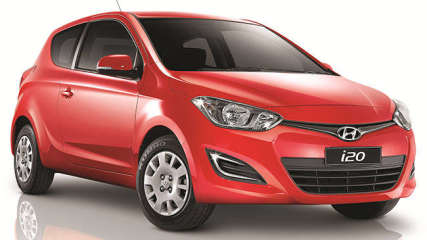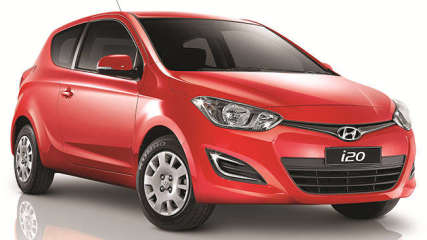Best fuel bill busters
By Joshua Dowling · 01 Nov 2012
Did you get a shock a couple of weeks ago when the price of petrol jumped almost 30 cents litre at the pump? Fear not, help is here.There’s little you can do about the rising cost of oil – but there is a choice of fuel-efficient cars with most mod-cons for less than $14,000 drive-away, no more to pay. Previously, it hasn’t always made economic sense to trade-in your old banger and buy a new car purely to save money on petrol. More often than not, the fuel savings are evaporated by the high cost of a new model.But that’s changing. The strong Australian dollar – and the most competitive new-car market in the free world – means you now get much more for your money. Standard fare typically includes six airbags, air-conditioning and, in most cases, wireless Bluetooth phone connectivity. That’s in addition to the miserly consumption and peace of mind new cars provide.As ever, the headline prices are for cars with manual transmission. Figure on another $2000 for auto (where available). One other word of caution: always ask how much metallic paint costs. Holden charges as much as $550 extra (Hyundai and Nissan $495 and Suzuki $475) which takes some of the shine off the bargain price.With all that in mind, we’ve assembled the four cheapest – and most worthy – fuel misers money can buy.Holden Barina SparkSales of the smallest new Holden money can buy have fallen off a cliff this year because of newer competition and the lack of an automatic transmission. But the baby Barina Spark will be worth another look in January when it finally becomes available with an automatic transmission – two years after it went on sale.The Barina Spark is among the smallest of this bunch but it comes with five doors and five seating positions, although there is really only room for two in comfort in the back. The interior has a futuristic design. It’s a user-friendly layout, with plenty of storage cubbies, although the plastics are hard to the touch.The 1.2-litre four-cylinder engine is willing but, as with most cars in this class, you need to keep the revs up to maintain momentum up hills. Or keep with the traffic. Road holding is sound but not best-in-class. Happily, there’s a full-size spare in the boot.The sound system is below average and Bluetooth is not standard (it’s a $410 accessory). In North America the Barina Spark is available with internet radio; Holden is rolling this feature across the range starting with the regular Barina in the new year.As with many brands, Holden offers fixed price servicing. But check the fine print: Holden requires you to service the car every nine months, not 12, which makes it dearer to maintain over the three-year warranty period. And another thing: Holden has the dearest metallic paint option in this group. At $550 extra, be sure to haggle.VERDICTSharply priced but lacks some features standard on rivals. Wait until January for the updated model.Holden Barina SparkFrom: $13,990 drive-awayEngine: 1.2-litre four-cylinderEconomy: 5.5L/100kmTransmission: 5-speed manual, 4-speed auto from JanuaryHyundai i20In the past few months the Hyundai i20 has had a facelift and a price cut, and it’s now back to being a bargain buy. When the i20 was released two years ago, Hyundai initially set the price at $16,990 – and buyers stayed away in droves.The Hyundai i20 has the longest warranty of this lot – five years and unlimited kilometres – but at this price only comes with three doors. Standard fare includes six airbags, Bluetooth connectivity (including music streaming) a new six-speed manual or optional four-speed automatic transmissions.The i20 is among the roomiest of this quartet, with the biggest boot (Hyundai i20: 295L, Nissan Micra: 227L, Barina Spark: 170L, Suzuki Alto 110L). As with the others, it comes with a full size spare. The Hyundai i20 is also the only car in this price range to score a five-star crash safety rating (the Volkswagen Up is five-star but it is $13,990 plus on-road costs, giving it a drive-away price closer to $17,000).The Hyundai’s interior is neither striking nor dull, it’s been designed to make life easy with 12V and USB power sockets, decent sized door pockets and a roomy glovebox. Given that the i20 has the biggest engine of this bunch, it’s no surprise it has more go and copes with the daily grind with less stress than the others.Road holding is near the top of these four cars but not class-leading. We’re not a fan of the Kumho Solus tyres in the wet. In the dry they’re fine. Hyundai’s fixed-price servicing deal is among the cheapest available – but the offer runs out after three years. Disappointingly, service costs return to free-market prices in the last two years of Hyundai’s warranty coverage.Given that it has just introduced this program, here’s hoping Hyundai extends the servicing deal to five years before the first customers hit this hump in their ownership experience. And another thing: Hyundai makes a point of the fact that the i20 was designed in Germany – but it’s built in India.VERDICTThe roomiest, zippiest and safest among this quartet (also has the longest warranty). But you only get three doors at this price.Hyundai i20From: $13,990 drive-awayEngine: 1.4-litre four-cylinderEconomy: 5.3L/100km manual, 5.9L/100km autoTransmission: 6-speed manual or 4-speed autoNissan Micra STWith its bubble-shaped cutesy looks, you could be forgiven for thinking the Nissan Micra is a bit of a toy car. But it’s surprisingly capable and, in the three-cylinder guise we’ve chosen, more fuel-efficient in the real world than the rating label suggests.The Micra very nearly won a host of Car of the Year awards when it was released two years ago, winning praise for its road holding and fun-to-drive dynamics. It tops the class in this price range (and has the tightest turning circle this side of a Smart car).Picking the right time to buy is key to the Micra's appeal. It has been priced as low as $12,990 drive-away for a manual model (an absolute steal), but the current cash offer is $13,990 drive-away – or 0 per cent finance for 60 months. However, if you take the finance offer you must pay full retail, which is closer to $15,990 drive-away.Our advice? Pay cash or arrange your own finance and shoot for a $12,990 drive-away price and see if you can get a Nissan dealer to take the bait. As with the Hyundai i20, the Nissan Micra has an inoffensive but functional interior, with plenty of hidden cubbies, big door pockets and glovebox and (for an economy car) surprisingly good seats.Although there are seats for five, it’s better off carrying a maximum of four. An unusual omission, the centre back-seat position lacks a head rest. The sound system may look bland but the audio quality is above average, and the Bluetooth set-up works a treat – but it doesn’t yet include music streaming and there’s no USB power source, just a 12V socket.Nissan offers fixed price servicing for the Micra (and the rest of its range) but it’s the dearest in the business. Nissan requires a visit to the dealer every six months – and the cost of each visit is higher than the competition. And another thing: Depending on overseas demand, Nissan sources the Micra from factories in Thailand and Indonesia.VERDICTOur pick based on its current discount price, the Nissan Micra is the best to drive in this group and (contrary to the label) among the most frugal.Nissan Micra STFrom: $13,990 drive-awayEngine: 1.2-litre three-cylinderEconomy: 5.9L/100km manual, 6.5L/100km autoTransmission: 5-speed manual, 4-speed autoSuzuki Alto GLIf you really want to drive your dollar further, the Suzuki Alto is the champion. Priced at $11,990 drive-away, it’s making life hard for the other mainstream brands – and even the cut-throat Chinese car makers struggle to undercut it.The Suzuki Alto is three years old now but is standing up well to the test of time. Its 1.0-litre three-cylinder engine is not the most refined in its class, but it operates with sewing machine-like reliability. It’s also the most frugal car in this group – in part because it demands premium unleaded petrol (95 octane), which is dearer to buy but goes further than regular petrol.The Suzuki Alto doesn’t come standard with Bluetooth but the current $11,990 offer for the “Indie” pack includes a portable navigation unit which comes with Bluetooth. The Alto has a hard-wearing functional interior that probably won’t win any beauty contests, but it’ll likely outlast owners. At least Suzuki is honest about how many people can fit comfortably; it only has seatbelts for four occupants.The boot is small (at least there is a ful size spare underneath) but as with all the hatchbacks here, the back seats fold so you can fit more gear. And another thing: Suzuki is the third-biggest car maker in Japan and outsells Mitsubishi, Subaru, Honda and Mazda in Europe. The Alto comes from India, where Suzuki is the market leader.VERDICTAt this price, nothing gets close. The limited edition ‘Indie’ pack is a bargain as it includes navigation and Bluetooth.Suzuki Alto GLFrom: $11,990 drive-awayEngine: 1.0-litre three-cylinderEconomy: 4.7L/100km manual, 5.3L/100km autoTransmission: 5-speed manual, 4-speed auto

.jpg)
.jpg)






